


Understanding And Fulfilling Their Needs
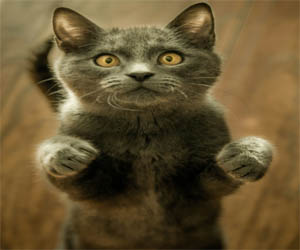
Cats, those enigmatic and graceful creatures, have the ability to bring immeasurable joy and contentment to our lives. Understanding the key to happy cats is essential for fostering strong and harmonious relationships with our feline friends. Here, we explore the factors that contribute to a cat's happiness and well-being.
1. Proper Nutrition
The foundation of a happy cat begins with proper nutrition. Cats have specific dietary needs, and the right balance of nutrients is essential for their overall health and contentment. High-quality cat food that aligns with their age, activity level, and any specific health concerns is crucial. Consult your veterinarian to ensure you are providing the best diet for your cat.
2. Regular Veterinary Care
Routine veterinary care is vital for monitoring and maintaining a cat's health. Regular check-ups, vaccinations, and preventive care help detect health issues early and ensure your cat receives the necessary treatments to stay happy and healthy.
3. Mental And Physical Stimulation
Cats are curious creatures that require mental and physical stimulation. Engage your cat with toys, puzzles, and interactive playtime. Activities like chasing feather wands, laser pointers, and treat-dispensing puzzles provide your cat with both mental and physical exercise, which contributes to their happiness.
4. Grooming And Hygiene
Grooming plays a significant role in a cat's happiness. Regular brushing helps prevent matting, reduces shedding, and provides an opportunity for bonding between you and your feline companion. Some breeds, particularly long-haired ones, may require more frequent grooming.
5. Safe Environment
Creating a safe and comfortable environment is essential for your cat's well-being. Ensure your living space is free of hazards, remove toxic plants and chemicals, and provide stimulating objects and areas for exploration. Cats appreciate window perches, scratching posts, and safe outdoor spaces if available.
6. Emotional Well-Being
Cats also have emotional needs. Spending quality time with your cat, offering them affection, and providing a loving and secure environment are crucial for their happiness. Building a strong bond with your cat leads to a contented and harmonious relationship.
7. Respect Boundaries
Cats have their own boundaries, and respecting them is key to their happiness. Allow your cat to come to you for attention and affection, and provide them with a quiet and secure space where they can retreat when they need solitude.
8. Enrich Their Environment
Offer an enriched environment with climbing structures, hiding spots, and cozy nooks for your cat to explore. Variety and opportunities for exercising their natural instincts contribute to their happiness.
9. Watch For Behavioral Changes
Pay close attention to your cat's behavior, as it can be an early indicator of health issues or dissatisfaction. Any significant changes should be addressed promptly with your veterinarian.
10. Patience And Love
Perhaps the most critical aspect of a happy cat is patience and love. Understand and embrace your cat's unique personality and boundaries. A loving and patient relationship enhances their overall well-being and ensures a fulfilling life for both you and your feline friend.
The key to happy cats lies in understanding and fulfilling their needs, both physical and emotional. By providing proper nutrition, regular veterinary care, mental and physical stimulation, a safe environment, and a loving relationship, you can unlock the door to a contented and joyful feline companion. Cherish each moment with your enigmatic and graceful cat, and you'll be rewarded with the boundless happiness they bring into your life.
 Reality Checks: To enhance dream manipulation skills, individuals often perform reality checks throughout the day. This practice involves questioning the state of reality by examining one's surroundings, body, or reality itself. When this habit carries over into the dream state, it can trigger lucidity.
Reality Checks: To enhance dream manipulation skills, individuals often perform reality checks throughout the day. This practice involves questioning the state of reality by examining one's surroundings, body, or reality itself. When this habit carries over into the dream state, it can trigger lucidity.
Setting Intentions: Before falling asleep, dream manipulators set specific intentions for their dreams. This might involve deciding to confront a fear, explore a particular scenario, or engage in creative problem-solving. The subconscious often responds to these intentions during the dream.
Mnemonic Induction Of Lucid Dreams (MILD): MILD is a technique that involves repeating a mantra or affirmation before sleep, such as "I will become aware that I'm dreaming." The act of self-suggestion increases the likelihood of becoming lucid within the dream.
Visualization: Visualization techniques are powerful tools for dream manipulation. By visualizing a desired dream scenario before falling asleep, individuals can increase the chances of experiencing that scenario in their dream.
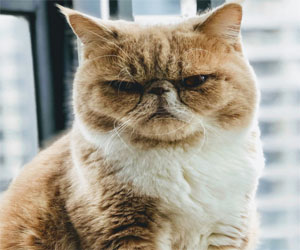 The Importance Of Proper Litter Box Habits:
The Importance Of Proper Litter Box Habits:
Litter boxes are more than just a convenience for cat owners; they are a fundamental aspect of a cat's daily routine. Proper litter box habits are crucial for several reasons:
Hygiene: A clean litter box prevents the buildup of waste, which can lead to odors and bacterial growth. Regular cleaning is essential to maintain a hygienic environment for both your cat and your household.
Mental Health: Cats are naturally clean animals and may become stressed or anxious if their litter box is not up to their standards. Maintaining a clean box contributes to your cat's mental well-being.
Preventing Accidents: A cat that doesn't have access to a clean and properly placed litter box may resort to urinating or defecating in inappropriate places, such as on your furniture or floors.




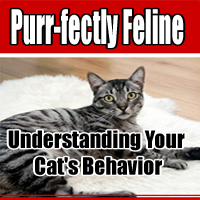

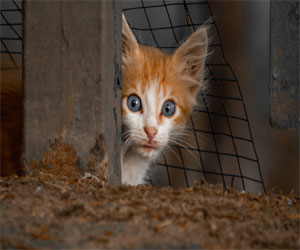 Territorial Aggression: Cats are territorial animals, and they may become aggressive when they perceive an intrusion into their space. This type of aggression is often triggered by other cats.
Territorial Aggression: Cats are territorial animals, and they may become aggressive when they perceive an intrusion into their space. This type of aggression is often triggered by other cats.
Play Aggression: Kittens and young cats frequently engage in play aggression, which involves pouncing, biting, and scratching. While it may seem playful, it can escalate if not managed properly.
Redirected Aggression: This occurs when a cat becomes agitated by a stimulus (e.g., another cat outside the window) and then redirects its aggression onto a nearby person or pet.
Pain-Related Aggression: Cats in pain may exhibit aggression as a defensive response. It's essential to rule out any underlying medical issues in cases of sudden aggression.
Understanding The Causes:
To address cat aggression effectively, it's essential to identify the root causes. Common contributing factors include:
Socialization issues during kittenhood.
Lack of mental and physical stimulation.
Sudden changes in the cat's environment.
Presence of other animals in the household.
Undiagnosed medical conditions causing pain or discomfort.
Fear or anxiety due to past traumatic experiences.
Managing Cat Aggression:
Consult A Veterinarian: If you notice a sudden change in your cat's behavior, especially if it's accompanied by signs of illness or discomfort, consult a veterinarian. Pain-related aggression should be ruled out.
Exploring Self-Hypnosis Techniques
 Self-hypnosis, also known as autohypnosis, empowers individuals to enter a hypnotic state on their own, without the assistance of a hypnotist. It can be a valuable tool for relaxation, personal growth, and addressing specific challenges. Here are some key self-hypnosis techniques to consider:
Self-hypnosis, also known as autohypnosis, empowers individuals to enter a hypnotic state on their own, without the assistance of a hypnotist. It can be a valuable tool for relaxation, personal growth, and addressing specific challenges. Here are some key self-hypnosis techniques to consider:
Find A Quiet Space: Begin by selecting a quiet, comfortable space where you can relax without distractions. Whether it's a cozy chair, a soft carpet, or even your bed, the key is to ensure you won't be interrupted during your self-hypnosis session.
Set An Intention: Determine the purpose of your self-hypnosis session. What specific issue or goal would you like to address or achieve? Having a clear intention will guide your self-hypnosis process.
Relaxation And Breathing: Sit or lie down in a comfortable position. Close your eyes and take a few deep, cleansing breaths. With each exhalation, release tension and stress. Slow, deep breathing can help induce a state of relaxation.
Visualization: Begin to visualize a calming and serene place. This could be a beach, a forest, or any location where you feel at peace. Imagine the sights, sounds, and sensations of this place. Visualization helps deepen your relaxation.
Progressive Muscle Relaxation: Progressively tense and then release the tension in each muscle group in your body, starting from your toes and moving upward. This can enhance your state of physical relaxation.
Affirmations And Suggestions: With your mind in a receptive state, use positive affirmations and suggestions related to your intention. For example, if you're seeking stress relief, you might say, "I am calm and in control." Repeat these affirmations while maintaining focus on your intention.
Embracing Sustainability And Environmental Responsibility
 2. Energy Efficiency
2. Energy Efficiency
Energy efficiency is a fundamental pillar of a clean energy future. It involves the optimization of energy use across various sectors, including residential, commercial, and industrial settings. Energy-efficient technologies, improved building designs, and sustainable practices reduce energy waste, lower energy bills, and cut greenhouse gas emissions.
3. Electrification Of Transportation
Transitioning from gasoline and diesel-powered vehicles to electric vehicles (EVs) plays a pivotal role in reducing carbon emissions. EVs produce zero tailpipe emissions, significantly lowering the carbon footprint of transportation. The expansion of EV charging infrastructure and the development of advanced battery technologies are driving this transformation.
4. Energy Storage Solutions
Energy storage technologies, such as advanced batteries and grid-scale storage, enable the integration of intermittent renewable energy sources into the power grid. These solutions ensure a reliable and consistent energy supply, regardless of weather conditions or time of day.
5. Carbon Capture And Utilization
Carbon capture and utilization (CCU) technologies capture carbon dioxide emissions from industrial processes and convert them into valuable products. CCU not only reduces emissions but also contributes to the circular economy by repurposing carbon dioxide as feedstock for fuels and chemicals.
6. Sustainable Urban Planning
Sustainable urban planning promotes eco-friendly city designs that reduce energy consumption and emissions. Compact, walkable cities with efficient public transportation systems and green infrastructure offer residents a high quality of life while minimizing their environmental impact.
Unleashing The Potential Of Man's Best Friend
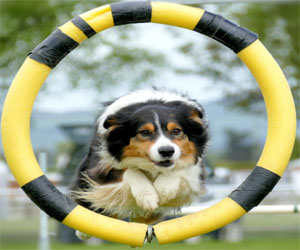 Agility competitions are among the most popular forms of canine performance. In these events, dogs must navigate through a challenging obstacle course, showcasing their speed, dexterity, and responsiveness to their owner's commands. The bond and coordination between the dog and owner are truly remarkable, as they work together to complete the course successfully.
Agility competitions are among the most popular forms of canine performance. In these events, dogs must navigate through a challenging obstacle course, showcasing their speed, dexterity, and responsiveness to their owner's commands. The bond and coordination between the dog and owner are truly remarkable, as they work together to complete the course successfully.
Obedience competitions focus on a dog's ability to follow commands and exhibit self-control. Dogs are evaluated based on their precision in executing commands like sitting, staying, heeling, and more. These competitions highlight not only the dog's obedience but also their intelligence and the dedication of their owners to training.
Canine freestyle, a more creative form of performance, combines obedience, tricks, and dance. Dogs and their owners choreograph routines set to music, incorporating a medley of tricks, spins, and synchronized movements. These performances are an impressive display of the bond between dog and owner, as they dance and dazzle the audience.